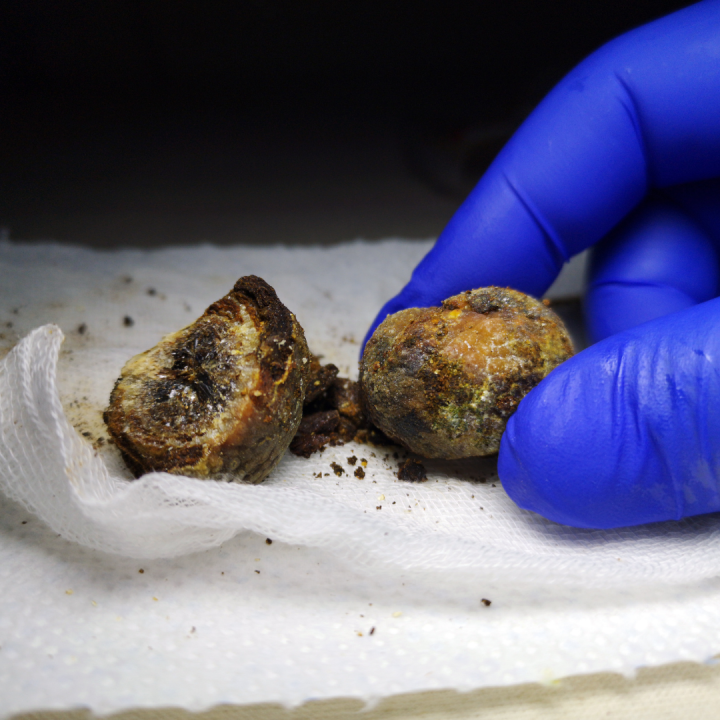46 new gene variations found to increase gallstone risk
The research, including Generation Scotland volunteer data, found 75 variations in genes that can affect a person's risk of getting gallstone disease.

How do gallstones develop?
Gallstone disease is a very common condition that affects the gallbladder. The gallbladder is just underneath the liver. It stores bile produced by the liver until the next meal. When an someone eats a meal, the gallbladder squeezes stored bile into the intestine to help digest fatty foods. As well as helping to digest foods, bile is also one of the body’s ways to get rid of cholesterol.
Normally the balance between cholesterol and other chemicals in the bile, such as bile acids, means that the cholesterol stays as a liquid. In some individuals this balance between cholesterol and bile acids isn’t right and the cholesterol starts to form crystals, which eventually form into stones in the gallbladder. Individuals with either a high cholesterol, low levels of bile acids or a gallbladder that doesn’t squeeze the bile out properly are at higher risk of gallstones. Gallstones are also more likely to affect women, people who are overweight and people with diabetes. Around 20-40% of the population will have developed gallstones by the time they reach old-age.
What are the symptoms of gallstones?
Gallstones sometimes cause symptoms like pain just under the ribs on the right-hand side. This pain often gets worse after eating a fatty meal when the gallbladder squeezes against the stones. Sometimes gallstones can cause more serious conditions, like inflammation of the pancreas or infection in the bile ducts that drain the liver.
How are gallstones treated?
At the moment the treatment for gallstones is usually removal of the gallbladder – people can live safely without their gallbladder just like they can live without their appendix. At the moment there aren’t many effective treatments offered to prevent gallstones from forming. By identifying genes that increase the risk of gallstones, scientists may be able to find a more effective drug to stop gallstones from forming or to help them dissolve without the need for surgery.
What are the new findings and how will they help?
Scientists have now identified 75 different gene variations that increase the risk of gallstones, of which 46 were identified for the first time. Many of the genes are involved in processing cholesterol and bile acids. However, two of the newly identified gene variations are within genes that control how fast the stomach and intestine squeeze food along. These same genes are commonly made into proteins in the gallbladder and might help the gallbladder to squeeze bile into the intestine before stones have a chance to form.
The results from this study provide new insights into how gallstones form and new targets for scientists to work on developing drugs to prevent gallstones. In the future, data from these studies may also help to predict when people are at higher risk of gallstones. Then, these people could be encouraged to make lifestyle changes, such as to their diet and exercise, which would reduce their risk of gallstones.
This research was possible by combining data from Generation Scotland, the UK Biobank and the FinnGen datasets. This paper was published in Hepatology and can be found in the link below:


